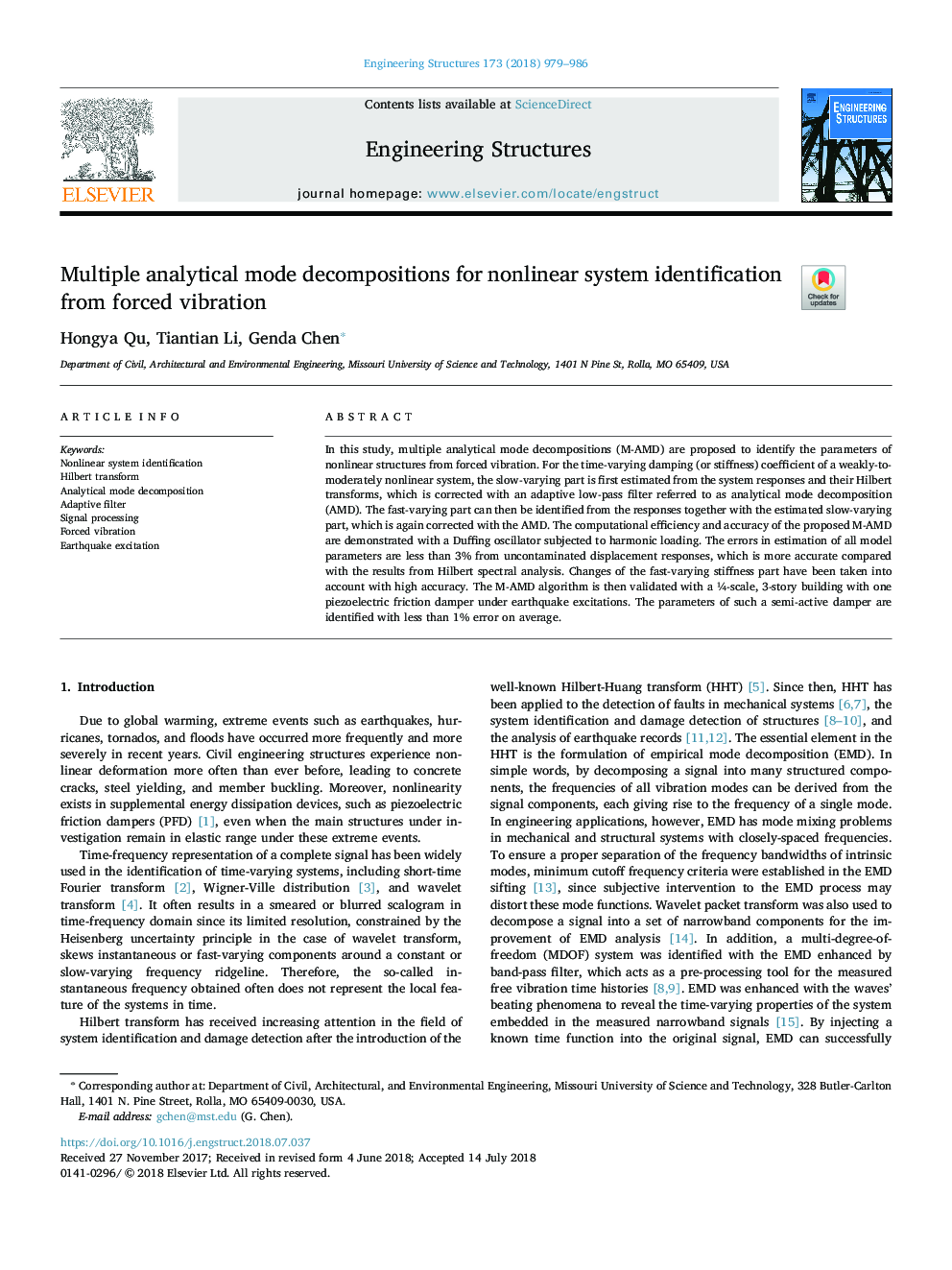| Article ID | Journal | Published Year | Pages | File Type |
|---|---|---|---|---|
| 6735829 | Engineering Structures | 2018 | 8 Pages |
Abstract
In this study, multiple analytical mode decompositions (M-AMD) are proposed to identify the parameters of nonlinear structures from forced vibration. For the time-varying damping (or stiffness) coefficient of a weakly-to-moderately nonlinear system, the slow-varying part is first estimated from the system responses and their Hilbert transforms, which is corrected with an adaptive low-pass filter referred to as analytical mode decomposition (AMD). The fast-varying part can then be identified from the responses together with the estimated slow-varying part, which is again corrected with the AMD. The computational efficiency and accuracy of the proposed M-AMD are demonstrated with a Duffing oscillator subjected to harmonic loading. The errors in estimation of all model parameters are less than 3% from uncontaminated displacement responses, which is more accurate compared with the results from Hilbert spectral analysis. Changes of the fast-varying stiffness part have been taken into account with high accuracy. The M-AMD algorithm is then validated with a ¼-scale, 3-story building with one piezoelectric friction damper under earthquake excitations. The parameters of such a semi-active damper are identified with less than 1% error on average.
Keywords
Related Topics
Physical Sciences and Engineering
Earth and Planetary Sciences
Geotechnical Engineering and Engineering Geology
Authors
Hongya Qu, Tiantian Li, Genda Chen,
